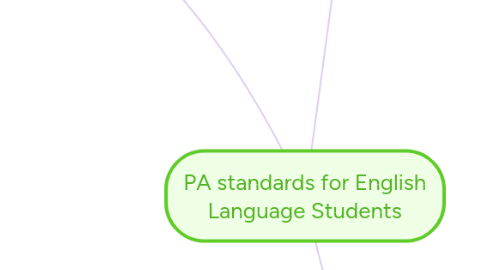
1. The Classroom Formative Framework
1.1. Language Domains Listening- Process, interpret, understand and evaluate written language in various situations Speaking- Participate in verbal communication in various situations for many different reasons with many audiences Reading- Process, understand, and evaluate written language, symbols and other text Writing-Participate in written communications in various forms, in different situations and settings
1.1.1. Teaching Strategy: Create an activity with four centers based on the "Language Domains". Listening- Have students sit in a circle and listen to a recording of a book, after write down a summary of what they heard and discuss. Speaking-Have students pick a partner and give them three topics to start a conversation with. After the conversation the student will record three things they learned from their conversations. Reading-Have the group pick a short story of their choice, the students will now pick out the main idea, climax, and conclusion. They will write these points on a separate sheet, after have a group discussion on the short story. Writing- Have students create a short story with characters, and complete conversations between the characters. This is to help them learn how to have conversations in different settings, Be sure to use proper punctuation and context in the dialogue.
1.2. 5 English Language Proficiency Standards Standard 1: ELL communicate intercultural, social, and instructional purposes in the school. Standard 2: ELL students communicate idea, information, and concepts for academic success in the language arts department. Standard 3: ELL communicate ideas and information to succeed in the Mathematics area. Standard 4: ELL Students communicate ideas and information for academic success in the Science area Standard 5: ELL Students communicate ideas and information for academic success in the area of Social Studies
2. The WIDA Summative/Large Scale Framework
2.1. PREK-K LISTENING Level 1 - Entering identifying objects to use or play with. (ball, blocks, swings) Level 2-Beginning Following one step set of directions Level 3-Developing Follow two step set of directions from pictures of objects (level 1) Level 4-Expanding Show the use of the object (Pass ball) Level 5- Bridging Simulate activities based on the pictures order (Make twos rows have a friend go between the rows) SPEAKING Level 1-Repeat polite words when modeled (Thank you/ Your Welcome) Level 2-Make polite requests from the models (please stand in line) Level 3-Instil polite language in conversations (example telephone conversation) Level 4-Offer compliments and gratitude Level 5- Choose polite language in social situations based on the audience (speaking to teacher vs speaking to peer)
2.1.1. Teaching Strategy-I believe the best way to practice these 5 levels is to start out talking about one object. Show the class a picture on a projector of a bicycle. Have the students look at the bicycle for a couple minutes so they can get a full look at the object. Now have students raise their hand and explain what that object is. Once it is identified begin to ask a series of questions.. What is this object used for? How many of you have seen or used this object? Can you buy this at a store? Where is the best place to use the object? Now have students draw a picture of themselves riding the bike. Have them use colors to add to its detail. Write "Bicycle" on the board and sound it out together. Now have students present their drawings to the class and talk about why they want or like to ride bicycles. Now have the children hang up their artwork to be reminded of the objects and spelling/pronunciation.
